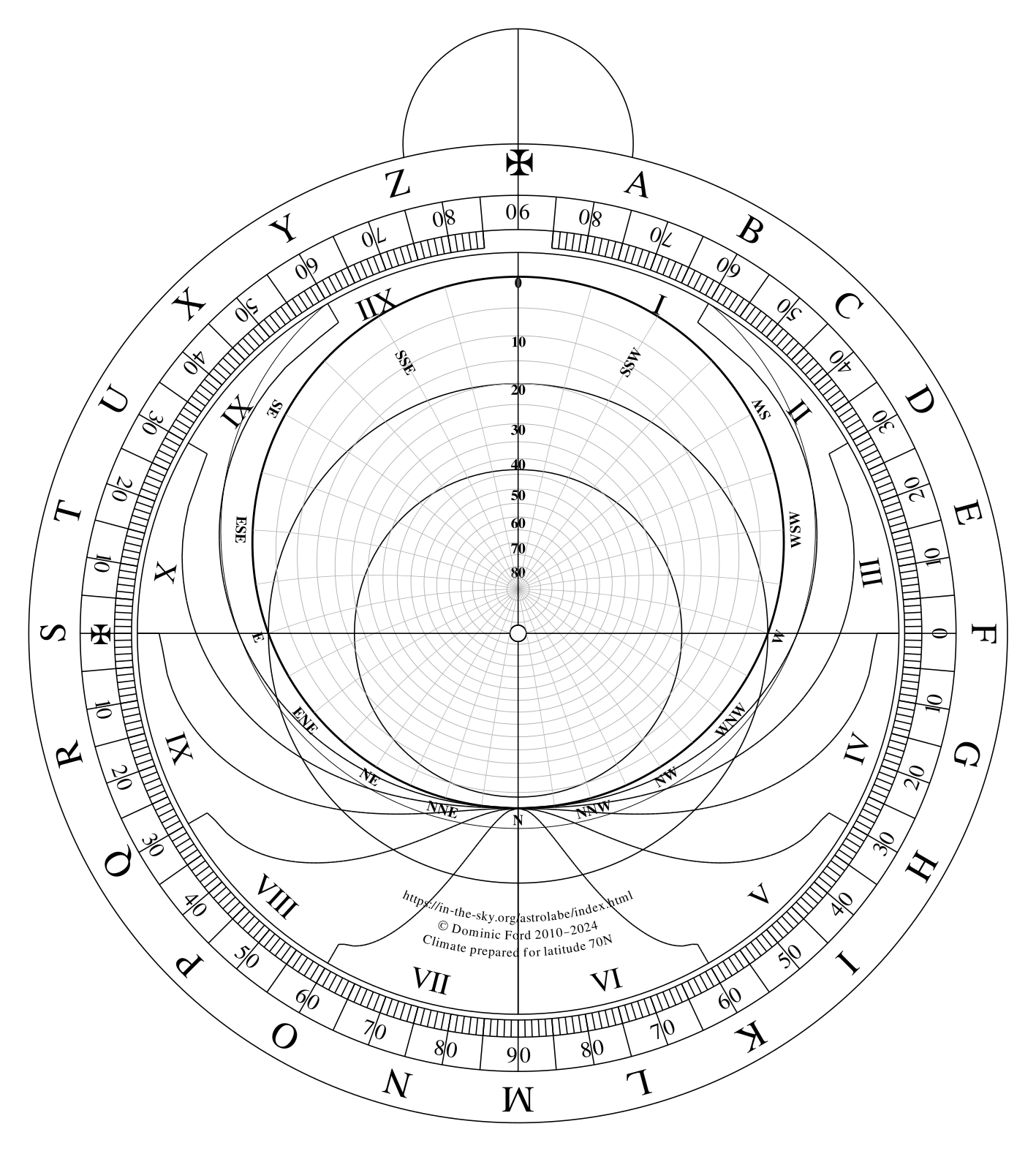Make your own Astrolabe
9. Extreme Astrolabes
The model astrolabe presented on these web pages is available with customisations for use at any latitude between 85°N and 85°S, sampled at 5° intervals, with an additional astrolabe at 52°N for use in northern Europe.
Such an innovation would have been quite alien to the medieval users of astrolabes, who would have considered a pilgrimage of a few hundred miles to be a treacherous undertaking, and many of whom would never have ventured more than a few miles from home.
In particular, the notion of a southern-hemisphere astrolabe would have seemed absurd in medieval times, but I nonetheless provide them for the curiosity of southern readers.
The astrolabe described by Chaucer is designed to work at moderate-to-high latitudes, and of course only covers the northern hemisphere. The sky is only mapped as far south as the Tropic of Capricorn (declination 23°S), and the southernmost portion of the sky is omitted altogether which is unsurprisingly since some of these constellations were not charted until the sixteenth century.
The planispheric projection used in the star charts on these astrolabes works best at moderate-to-high latitudes, where few if any stars below declination 23°S are visible. At latitudes closer to the equator, large portions of the visible sky are missing.
Southern-hemisphere astrolabes
South of the equator, I have reversed the projection and placed the southern celestial pole at the centre of the astrolabe. This means that scale of right ascension also need to be reversed, as the whole sky has effectively been turned upside-down.
The retes of southern-hemisphere astrolabes rotate in the opposite direction (counter-clockwise) to northern-hemisphere astrolabes (clockwise) as the night progresses. This is because while the Earth rotates clockwise as seen by an observer looking down on its north pole, it rotates counter-clockwise as seen by an observer looking down on its south pole.
In order that the sequence of Roman letters around the rim of the front of the mother should still represent twenty-four equal hours, their direction is also reversed on southern astrolabes.
Polar astrolabes
Within the Arctic and Antarctic circles, another problem is encountered: the system of unequal hours becomes ill-defined since the Sun never sets. In the climates provided for such latitudes, I have arbitrarily chosen a definition such that polar days or nights are divided into twelve equal hours between successive midnights.
This definition interfaces smoothly with the lengths of the unequal hours on the days at the start and end of the long periods of polar darkness or continuous sunshine. On these days, the Sun only spends a few minutes above (or below) the horizon, and so the unequal hours of the day (or night) are very short.
License
Like everything else on this website, these astrolabe kits are © Dominic Ford. However, they are provided for the benefit of amateur astronomers worldwide, and you are welcome to modify and/or redistribute any of the material on this website, under the following conditions: (1) Any item that has an associated copyright text must include that unmodified text in your redistributed version, (2) You must credit me, Dominic Ford, as the original author and copyright holder, (3) You may not derive any profit from your reproduction of material on this website, unless you are a registered charity whose express aim is the advancement of astronomical science, or you have the written permission of the author.
